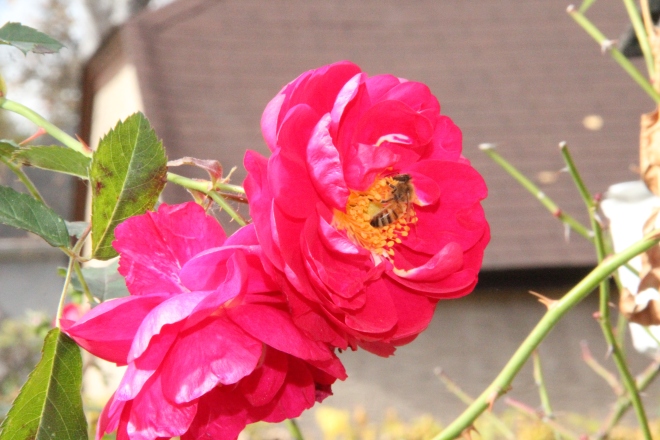In mid-November when most trees are bare, a ginkgo tree lit by the sun is a golden sight. Until last Friday’s heavy rain, wind and snow, the ginkgoes were beautiful this year. Ginkgoes (Ginkgo biloba) are also called maidenhair trees because their leaves resemble those of the maidenhair fern. The leaves remind me of delicate Asian fans — cool green in summer, and in autumn, bright yellow mellowing to a deep gold.
I saw my first ginkgo on a beautiful fall day in the late 1970s on the campus of St. Catherine University in St. Paul, Minn. I’d not heard of a ginkgo and never guessed that an ancient tree native to China would become a common boulevard tree in the Twin Cities. Ginkgoes do well in USDA plant hardiness zones 3-8, and many are planted in urban areas because they tolerate air pollution and the corrosive de-icing salt used on streets in northern winters.
The word ginkgo means “silver fruit” or “silver apricot.” Fossils of ginkgo trees precede dinosaurs, dating back 270 million years to the Jurassic period. They lived with such creatures as dragonflies, trilobites, many types of reptiles, and such plants as mosses and conifers. In comparison, the oldest fossilized maples are about 100 million years old, and trees similar to modern oaks arose nearly 35 million years ago. Like other ancient plants, ginkgoes are non-flowering. They reproduce similarly to ferns and algae. The male tree produces a pollen cone and the female tree a flowerless ovule. Each pollen grain contains two motile sperm. When the pollen grains reach the ovule, a tiny droplet of liquid must be present for the sperm to swim to and fertilize the ovule to produce the seed.
The oldest living ginkgo in China is thought to be more than 3,500 years old. A testament to the species’ resilience is its survival of Earth’s many climatic changes deadly to other organisms. In modern times, six ginkgoes survived the atomic bombing of Hiroshima, Japan. Temples and other buildings were destroyed. The ginkgoes were damaged and burned, but leafed out the following year and are still alive today about .6 miles from the impact site.
So, with their beauty, long life, strength and stamina, what’s not to like about ginkgoes? Unfortunately, the outer coat of the ginkgo seed reeks. When the seeds drop from the trees and are crushed on the sidewalk and street, they create a terrible stench – some compare it to the odor of rancid butter or vomit. Only the female tree produces seeds, so city planners and residents often plant male trees. However, if the male tree was grafted to female rootstock, the mature tree sometimes produces seeds. In China and Japan, the seeds are peeled and used in many types of cuisine. Enjoy the beautiful ginkgo, but don’t walk through the messy, malodorous seeds!




